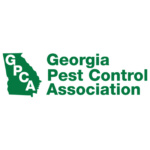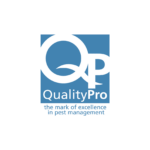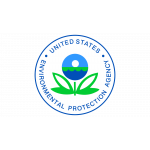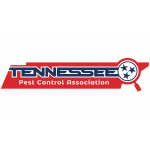Common Termite Species in the Southeast
Termites may be tiny, but their impact is anything but small. Known as silent destroyers, termites cause billions of dollars in property damage annually across the United States. The Southeast, with its warm, humid climate, is a hotbed for termite activity. Homeowners in this region need to be especially vigilant about identifying and managing termite infestations promptly.
But identifying termites is easier said than done. Different species of termites behave and look differently, and knowing which one you’re dealing with can help you take the right precautions. This blog will walk you through the most common termite species in the Southeast, how to spot them, and strategies for protecting your home.
Why the Southeast Is a Termite Hotspot
Before we discuss termites, it helps to understand why the Southeast is inviting for these pesky insects. Termites thrive in warm, moist environments, which describes much of the Southeastern U.S. perfectly. From Louisiana to Florida and up through South Carolina, the region’s warm summers, mild winters, and consistent humidity create the perfect breeding and foraging conditions for termites.
This constant humidity often means homes and buildings in the Southeast have higher moisture levels in their soil and wooden structures, providing termites with an abundant food supply and an environment to flourish. For that reason, it’s crucial to remain vigilant and understand the threats lurking around your property.
The Most Common Termite Species in the Southeast
Did you know there are over 2,000 types of termites worldwide, with about 50 species in the United States alone? Here’s a breakdown of the most common termite species that homeowners encounter in the Southeast:
1. Subterranean Termites
When most people hear the word “termite,” they’re usually thinking of subterranean termites. These wood-munching insects cause the bulk of termite damage in the United States and are especially prevalent in the Southeast.
How to Identify Them:
- Nest Location: They live underground, often building tunnels (or mud tubes) to forage for food.
- Appearance: Worker termites are cream-colored and small (about 1/8 inch long), while soldiers have elongated, dark heads with pincers. Reproductive swarmers are brown or black with wings.
- Behavior: Subterranean termites require moisture to survive. They often build mud tubes on walls or foundations to access moist wood.
Signs of Infestation:
- Mud tubes along your home’s foundation
- Swarming reproductive termites (especially after rain)
- Hollow-sounding wood when tapped
2. Formosan Termites
Often dubbed the “super termites,” Formosan termites are one of the most destructive termite species globally. Native to China, they’ve made their way into the Southeast and are particularly aggressive in their feeding habits.
How to Identify Them:
- Nest Location: Unlike subterranean termites, Formosan termites can build aerial nests if enough moisture is present.
- Appearance: Similar in appearance to subterranean termites but slightly larger. Winged swarmers are light brown, and soldiers are larger with oval heads.
Signs of Infestation:
- Large mud nests within walls or attics
- Extensive damage, often faster than that caused by other species
- Visible swarms in the evening during spring and summer
3. Drywood Termites
Unlike subterranean or Formosan termites, drywood termites don’t rely on moisture-rich environments. Instead, they infest dry, undecayed wood in higher, more elevated areas of your home, such as attics, furniture, and wooden framing.
How to Identify Them:
- Nest Location: Drywood termites live directly inside dry wood, without the need for soil.
- Appearance: They’re larger than subterranean termites, with cream or pale brown bodies.
- Behavior: They create small pellets or droppings, which can often be seen near infested wood.
Signs of Infestation:
- Piles of fecal pellets (resembling small grains of sand)
- Swarming during warm months
- Cracks or hollow areas in wooden furniture or beams
4. Dampwood Termites
Less common than other species, dampwood termites are drawn to moist, decayed wood. You’ll find them in rotting logs, stumps, or areas of your home with chronic leaks or water damage.
How to Identify Them:
- Nest Location: Dampwood termites settle in wood with excessive moisture.
- Appearance: Larger than other species, they can range from 1/2 to 5/8 inches long. Their bodies are light brown to cream.
Signs of Infestation:
- Soft, decayed wood on your property
- Visible wings near infested areas
- Excessive moisture or water damage around the home
Preventing Termite Damage in the Southeast
Termites may be a fact of life in the Southeast, but that doesn’t mean your home has to fall victim. Prevention and vigilance remain your best defense. Here’s how you can protect your home:
Reduce Moisture Around Your Property
- Fix leaky pipes, gutters, and faucets to eliminate standing water.
- Ensure proper ventilation in crawl spaces and attics.
- Use a dehumidifier in particularly damp areas.
Inspect Your Home Regularly
- Look for signs of mud tubes, wood damage, or discarded wings.
- Conduct annual termite inspections, especially if termites are common in your area.
Create a Barrier
- Keep wood piles, mulch, and vegetation away from your home’s foundation to limit access points.
- Seal gaps, especially around plumbing or electrical lines where termites can enter.
Work with Professionals
Sometimes, it’s easier (and safer) to leave termite control to the experts. Exterminators can provide termite bait systems, liquid treatments, and regular inspections to keep infestations in check.
What to Do If You Spot Termites
If you suspect termites are in your home, don’t panic, but don’t wait either. Termites can inflict severe damage quickly. Here’s what to do next:
- Confirm the Species: Try to identify the termite type or call a pest control professional for advice.
- Call an Exterminator: Termites are notoriously challenging to eliminate without professional help.
- Repair Damage: Once you’ve tackled the infestation, make sure to repair any wood or structural harm to prevent future problems.
Safeguard Your Home from Termites Today
Understanding the common termite species in the Southeast is the first step toward protecting your home from their voracious appetite. Whether you’re dealing with subterranean, Formosan, drywood, or dampwood termites, staying informed and proactive is key to avoiding costly repairs down the line.
If you’d like to stay ahead of potential infestations, consider partnering with a pest control expert to inspect your home annually and set up preventive measures. While termites may be common in the Southeast, with vigilance and proper care, you can ensure your home is not their next meal.






